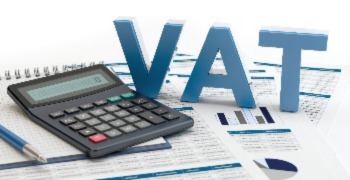
VAT rates across Europe: Know the difference
If you operate within Europe and you’re looking to scale your business up, it’s important to keep VAT rates in mind. As you grow your business, you’ll likely expand across borders, which means accounting for the tax rules of different countries.
While the EU weighs in on many VAT matters, each country can decide their VAT rates. This level of variety makes things complicated for businesses that sell to multiple countries, as different VAT rates can significantly affect the pricing of their goods.
Luckily, Avalara is here to help. In this blog, we’re discussing some of the VAT rates most likely relevant to European businesses. We’ll look at the rules the European Union has established for VAT and explain the VAT rates for some of Europe's biggest economies, including Germany, France, Italy, and more!
Key takeaways
- Expanding into Europe means navigating a complex VAT landscape, with each country applying the rules differently despite shared EU guidelines.
- Understanding how standard, reduced, super-reduced, and parking rates are applied across borders is essential for accurate VAT treatment.
- Staying compliant requires businesses to monitor rate changes and local rules to ensure correct tax calculation and reporting in every market.
EU rules on VAT rates
While the European Union does not have the power to set the VAT rates of each of its member states, it has several basic rules that EU countries must abide by. New rules are included in various EU directives, but the primary directive (released in 2006) established that:
- Countries must have a standard VAT rate and up to two reduced rates.
- The standard VAT rate of an EU member state cannot be less than 15%.
- The reduced VAT rate(s) of an EU member state cannot be less than 5%.
Additionally, the EU allows for three kinds of special rates:
- Super-reduced rates are VAT rates less than 5% and only apply to specific goods in specific countries.
- The term zero rates simply refer to a 0% VAT rate, where consumers don’t need to pay any VAT on the purchase of a particular type of product.
- Parking rates, sometimes called intermediary rates, are similar to reduced rates. Annex iii of the 2006 EU VAT directive listed the specific goods and services to which the reduced rates can apply; some EU countries apply parking rates to goods not listed in annex iii. While the VAT rate on these goods can be lower than the standard rate, it must be higher than 12%.
Important EU VAT rates by country
Below, we’ve included a closer look at the VAT rates of Germany, Great Britain, France, Italy, and Spain. We’ve specifically looked at these five nations as they are the five largest economies in Europe and will likely be relevant to the largest number of businesses.
If you’re interested in more information on the VAT rates of other European countries, be sure to check out our page on EU VAT rates. As well as being able to search by country, we’ve listed which rates apply to which products, so you know exactly how your business will be affected.
VAT in Germany
Germany currently uses three VAT rates:
- 19% standard rate
- 7% reduced rate
- Zero rate - Used for international and intra-community transport.
While the standard rate currently sits at 19%, it’s a good example of how VAT rates can shift: from July 2020 until December 2022, the German standard VAT rate was set at 7% to combat the economic impact of the COVID-19 pandemic.
Many EU countries apply the reduced VAT rate to necessities, and Germany is no exception. In Germany, the reduced rate applies to basics like food, water supplies, medical equipment, and educational necessities (such as books and admission to cultural events).
For more information, see our Germany VAT guide.
VAT in the UK
The United Kingdom currently uses three VAT rates:
- 20% standard rate
- 5% reduced rate
- Zero rate
While the reduced rate does apply to certain basics, the zero rate is more commonly applied in the UK. As such, many goods and services in the UK are untaxed when they would be in other European countries.
Following Brexit, the UK is not part of the EU, so European Union rules no longer apply to UK VAT rates. As such, UK VAT rates could increase or decrease beyond the scope of EU rules in future, which is an important point to remember if you trade within the UK.
For more information, see our UK VAT guide.
VAT in France
France currently uses five VAT rates:
- 20% Standard rate
- 10% reduced rate
- 5.5% reduced rate
- 2.1% super-reduced rate
- Zero rate - Used for international and intra-community transport.
France has a 2.1% super-reduced rate. Special rates, like the super reduced rates, only apply in EU countries that were using those rates on 1 January 1991. They were allowed to help streamline the shift to EU VAT rules when the Single Market came into force on 1 January 1993 and were intended to be gradually phased out.
For more information, see our France VAT guide.
VAT in Italy
- 22% Standard rate
- 10% reduced rate
- 5% reduced rate
- 4% super-reduced rate
- Zero rate - Used for international and intra-community transport.
Of the countries listed here, Italy has the highest standard VAT rate, though it’s not the highest in Europe (that would be Hungary, with a 27% standard rate). Additionally, Italy has a super-reduced rate that (like France) is a holdover from the pre-EU system.
For more information, see our Italy VAT guide.
VAT in Spain
- 21% Standard rate
- 10% reduced rate
- 4% reduced rate
- Zero rate - Used for international and intra-community transport and the taxation of gold ingots, coins and bars.
Almost all European countries have a zero rate for international and intra-community transport. In Spain, gold bars, coins and ingots are also zero-rated. It’s common amongst EU countries to reduce the VAT on gold (specifically gold bought as an investment) as it encourages the purchase of gold within that country.
For more information, see our Spain VAT guide.
Let Avalara support your VAT compliance goals
If you sell to multiple European countries, you’ll be juggling multiple different VAT rates, as well as different tax compliance rules and regulations. This can get very complicated very quickly.
Instead of struggling alone, get in touch with the tax experts at Avalara. Our digital solutions can help eliminate confusion and allow your team to focus on trade instead of worrying about VAT compliance. For example:
- Avatax: Struggling to calculate multiple VAT rates while distance selling? The Avatax platform helps ensure fast, accurate tax calculations at checkout.
- Registration: Registering for VAT in another country can be complicated, and having to do so multiple times as you expand is even tougher. Our digital solution helps streamline the process.
- Returns: Providing accurate VAT returns is a crucial part of compliance, but creating them can be time-consuming. Our Returns and Reporting tool helps you cut down on the time you spend on creating VAT returns and helps ensure they’re error-free.
If you’re looking for more information on the VAT system in the EU, be sure to check out our handy VAT guide. It’s full of useful information and helpful advice on how to comply with cross-border VAT rules - click here to read now.
VAT rates FAQ
Which countries have the highest VAT rate?
Hungary currently holds the highest standard VAT rate in the EU at 27%, followed by Croatia, Denmark, and Sweden at around 25%.
Does VAT apply between EU countries?
Yes. When goods or services are traded between EU countries, VAT usually applies in the country where the customer is located. In many B2B cases, the reverse-charge mechanism is used.
Which is the most heavily taxed country in Europe?
Hungary is the most heavily taxed EU country with a 27% rate. Considering full consumption taxes, Denmark, Sweden, and Croatia are also at the top of the range.
Stay up to date
Sign up today for our free newsletter and receive the latest indirect tax updates impacting businesses selling internationally straight to your inbox.



